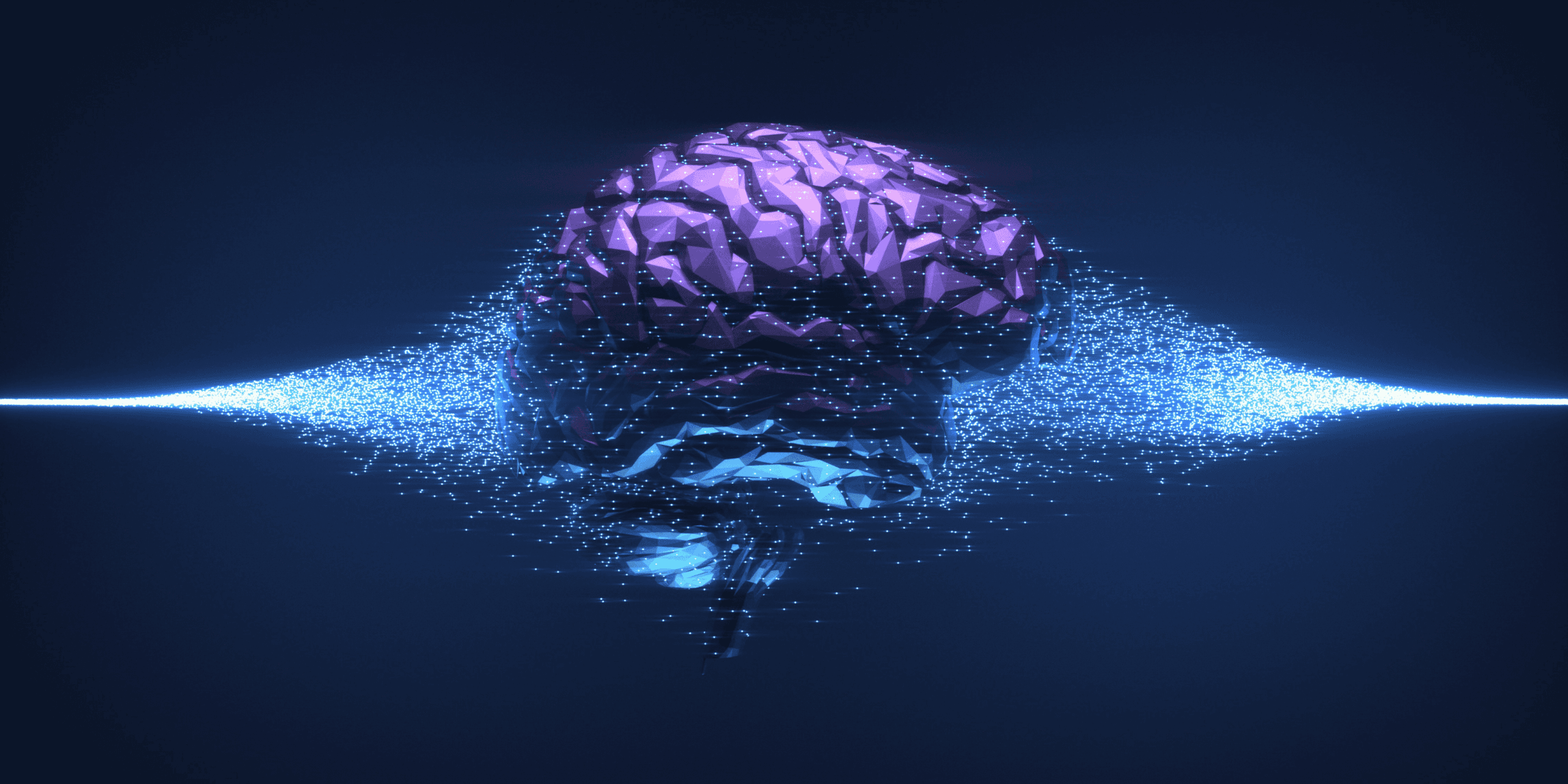The rise of AI-augmented software engineering has reconceptualized the way software products are developed and deployed. For developers, IT professionals, and decision-makers like CTOs and CEOs, it's the future of efficient and innovative product creation.
This blog explores AI-augmented development vs. traditional development, its advantages, and the challenges it presents. We’ll also look into its applications across industries and how businesses can benefit from incorporating AI into their software development life cycles.
What Exactly is AI-augmented Software Engineering?
AI-augmented development refers to the use of artificial intelligence to enhance various stages of the software development lifecycle, from coding to deployment. It leverages intelligent algorithms, machine learning models, and predictive analytics to assist or automate development tasks, improving accuracy, efficiency, and speed.
 The AI-augmented software engineering sector is experiencing unprecedented expansion, growing from $2.17 billion in 2023 to $3.18 billion in 2024, reflecting an impressive compound annual growth rate (CAGR) of 46.4%. Looking ahead, the market’s trajectory is projected to maintain this rapid pace, reaching $4.68 billion by 2028 at a CAGR of 46.6%.
What good does it bring to software developers? It allows them to focus their energy on creative problem-solving and handling repetitive or error-prone tasks. The result? Smarter programming and faster delivery of high-quality applications.
The AI-augmented software engineering sector is experiencing unprecedented expansion, growing from $2.17 billion in 2023 to $3.18 billion in 2024, reflecting an impressive compound annual growth rate (CAGR) of 46.4%. Looking ahead, the market’s trajectory is projected to maintain this rapid pace, reaching $4.68 billion by 2028 at a CAGR of 46.6%.
What good does it bring to software developers? It allows them to focus their energy on creative problem-solving and handling repetitive or error-prone tasks. The result? Smarter programming and faster delivery of high-quality applications.
AI-augmented Development vs. Traditional Software Development
How does AI-augmented development differ from traditional software development? Traditional software development relies heavily on manual processes and human input throughout the lifecycle. While effective, it is time-consuming, prone to human error, and depends on the engineer's skills.
Meanwhile, AI-powered software development combines human ingenuity with artificial intelligence, a major strength of which is automation. It also streamlines workflows and helps unlock new possibilities in software creation. Contrary to popular belief, it's not about replacing developers. It’s about empowering them to build better software at record speed.
Advantages of AI-augmented Software Development
Several key advantages make augmented software appealing to businesses:
1. Increased Development Speed
AI-powered tools can write, debug, and optimize code faster than human developers. By automating repetitive coding tasks, developers can bring products to market more quickly.
2. Automated Code Documenting
Documenting code is an often neglected yet essential part of software development. AI tools can generate detailed, consistent documentation automatically. It can thus reduce the overhead for developers and improve collaboration.
3. Improved QA and Bug Detection
AI systems like static code analysis tools and testing frameworks excel at identifying bugs and security vulnerabilities. By detecting errors early in the development process, they save time and prevent costly post-release fixes.
 AI augmentation has the potential to improve software testing, specifically in testing planning and prioritization, creation and maintenance, data generation, visual testing, and defect analysis.
AI augmentation has the potential to improve software testing, specifically in testing planning and prioritization, creation and maintenance, data generation, visual testing, and defect analysis.
4. Assisting in Transitioning Between Environments or Programming Languages
AI tools can adapt existing codebases to new programming languages or frameworks, reducing migration efforts.
5. Development of Low-code and No-code Platforms
AI-augmented software engineering powers drag-and-drop platforms. So, even users with little technical knowledge can create functional applications. This democratization of software development is vital for innovation across sectors.
6. Personalization of Development Tools
AI can analyze a developer’s coding style and deliver improvement suggestions, enhancing productivity and the overall development experience.
Challenges and Limitations of AI-augmented Software Development
However appealing, AI-augmented software engineering has its limitations.
1. Dependence on AI for Critical Tasks
Overreliance on AI (which has become a global concern since GenAI appeared) for important development tasks could become problematic. AI systems are prone to hallucinations and sometimes generate irrelevant inputs. That being said, it still requires human oversight.
2. Job Displacement and Changing Roles
While AI augments human work, it also redefines roles within the development ecosystem. Developers may need to upskill to remain competitive.
3. Cost of Implementing AI Tools
Integrating AI into development workflows requires investment in tools, infrastructure, and training. Demanding in resources, this may be challenging for smaller organizations.
4. Challenges in Adapting to AI Integration
Teams unfamiliar with AI tools may face a learning curve. Staff education is critical, but it often delays augmented software development.
5. Overestimating AI Capabilities
Despite its advancements, AI isn't flawless. Businesses must understand its limitations and refrain from expecting it to solve every problem.
6. Complexities in Implementation
AI integration often involves complex customization and potential disruptions to existing workflows.
AI-augmented Software Development Use Cases in Different Industries
To make the most of this augmented coding, organizations should start adopting AI asap. Look below at the possibilities it opens for industries.
1. Healthcare
AI is revolutionizing healthcare apps by enabling the quick development of diagnostic tools, patient management systems, and personalized treatment plans.
2. Finance
AI-augmented development supports fraud detection, risk assessment, and the creation of secure financial applications.
3. E-commerce
AI helps in building smarter e-commerce platforms with personalized product recommendations, optimized search functionalities, and data-driven insights.
4. Manufacturing
AI enhances supply chain optimization, predictive maintenance, and automation in manufacturing, contributing to increased efficiency.
How Can AI Accelerate Software Development?
We’ve already mentioned that AI helps create IT products faster. Let’s see what processes it speeds up.
1. Faster Development Cycles with AI-powered Decision Making
AI can analyze data patterns to make informed decisions, streamlining design and implementation phases.
2. Continuous Integration and Deployment (CI/CD) Optimization
AI-powered tools automate testing and deployment workflows, enabling faster CI/CD processes.
3. Accelerate Software Roadmaps Acceleration via AI-Driven Predictive Analysis
AI uses data insights to forecast project timelines and identify potential bottlenecks, improving decision-making.
4. AI-Generated Code Reusability
AI simplifies code reuse by identifying existing solutions within repositories, making application development more efficient.
5. AI-Boosted Developer Assistance: From Code Completion to Full Feature Creation
From intelligent code suggestions to full-feature automation, AI tools like GitHub Copilot enhance coding productivity.
I want to built AI solution. Book a 30-min. consultation
Request a free callHow AI-augmented Software Development Can Benefit Businesses?
So, how can your business benefit from AI-powered software development?
1. Increased Productivity and Efficiency
Automating repetitive tasks allows teams to focus on complex problem-solving, driving productivity.
2. Speeding Up Time-to-Market
Faster development cycles mean businesses can deliver products and services more quickly, gaining a competitive edge.
3. Enhancing Business Models and Revenue Streams
AI-driven tools enable innovative service models, resulting in increased revenue opportunities.
4. Improving Customer Service with AI-driven insights
AI-powered applications can analyze customer interactions and provide actionable insights to enhance customer experiences.
5. AI-powered Monitoring and Analytics
AI provides real-time monitoring and diagnostics, ensuring the reliability of mission-critical applications.
6. Minimizing Human Errors in Repetitive Tasks
By automating repetitive tasks, AI drastically reduces the chance of human error.
7. Optimizing HR Management with AI
AI tools streamline hiring and improve workforce management with predictive analytics and automated onboarding processes.
Clover Dynamics’ Experience With AI-augmented Software Engineering
We, at Clover Dynamics, have always been focused on working with technologies we find empowering. Focusing on what our clients envision, our team finds the most efficient ways to deliver. By automating code reviews, integrating predictive analysis, and employing AI-generated test cases, Clover Dynamics is able to successfully launch a feature-rich product within tight deadlines.
The tech world infused with GenAI tools has already exhibited the necessity to adopt augmented coding. Being one of the top ML development companies, as per The Manifest, we strive to refine existing approaches to AI-powered software engineering. How do we see it done? Via a combo of top AI tools with skilled developers and visionary CEOs who come to us with their ideas.
Do you have a valuable idea and need help bringing it to life? Contact us, and we’ll help you with MVP, development, deployment, and other important stages.
Frequently Asked Questions (FAQ)
What Are the Long-term Benefits of Integrating AI Into The Software Development Lifecycle?
Integrating AI into the software development lifecycle enhances efficiency, improves code quality, fosters innovation, and reduces time-to-market and operational costs.
How Does AI Adapt To New Coding Languages and Frameworks Over Time?
AI systems utilize ML algorithms that continuously learn from project data and community resources. They adapt to emerging coding languages and frameworks via pattern analysis, syntax, and usage in real time. In the end, this ensures relevance and effectiveness in diverse development environments.
Can AI-driven Development Help Create More Inclusive and Accessible Software?
Yes, it can. AI-driven development employs NLP and ML to identify and rectify biases, improve design usability, and generate adaptive interfaces. This way it caters to diverse user needs and abilities.
How Can AI Improve The Software Maintenance Phase Post-launch?
In most cases, AI automates bug detection and resolution post-launch. It employs intelligent anomaly detection, predicting maintenance needs with data-driven insights. This ensures that software remains robust and adaptable to user feedback over time.







